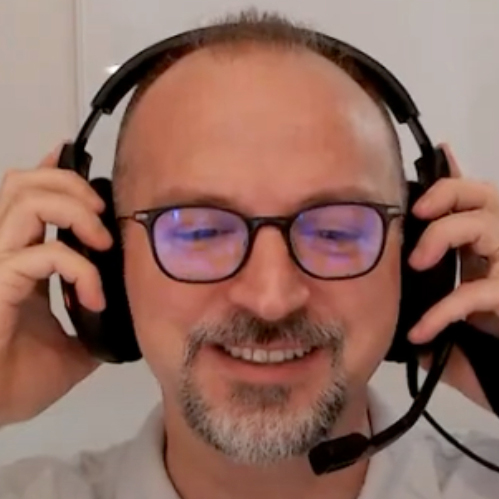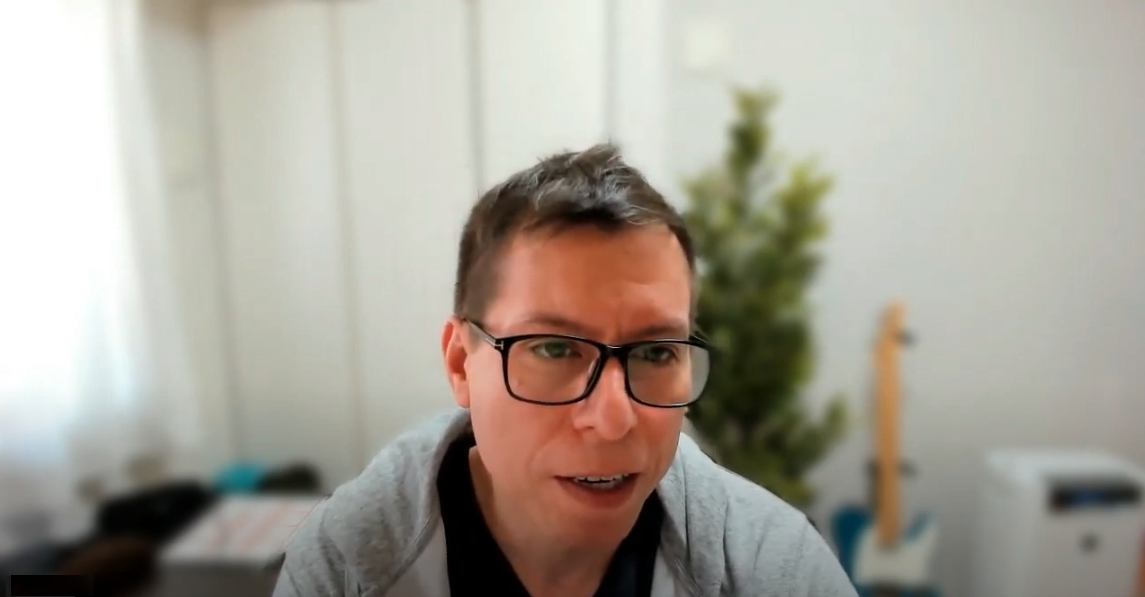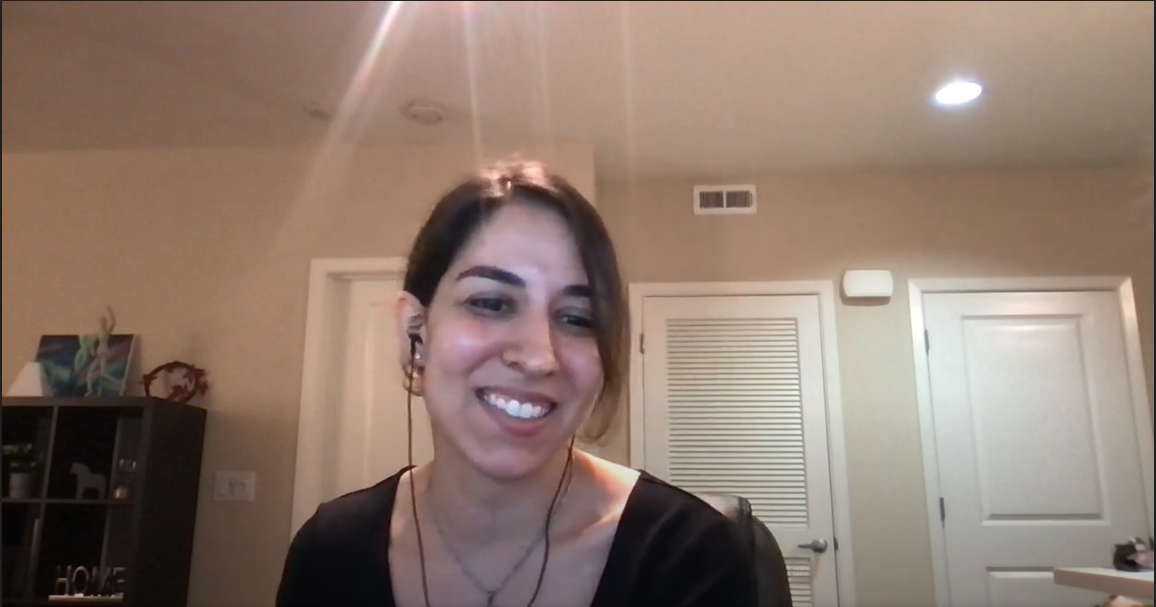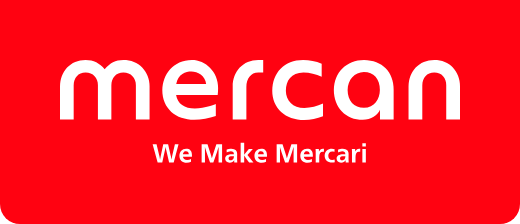
“Our Focus on Users” and “All for One Spirit”: The Story Behind the Growth of Mercari US
In 2021, Mercari US continued the steady expansion of its service experience, with the announcement of two new partnerships. Working with Uber, Mercari grew its contactless same-day collection and delivery service called Mercari Local across the US, and with the help of Zip, it started offering a Buy Now Pay Later service.
So, what is the Mercari US team up to now? We spoke with some of the members behind the growth and expansion of the US business: @mok, VP of Product & Engineering, and @tuttiq, Senior Engineering Manager at Mercari US, along with @brad and @Jonathan from US@Tokyo, the team supporting Mercari US from Japan.
Featured in this article
-

Tutti Quintella(@tuttiq)Senior Engineering Manager at Mercari US, the newest member among the interviewees -

Brad Ellis(@brad)VP of Engineering at Mercari US@Tokyo, has experience both in product management and engineering -

Jonathan Sosa(@Jonathan)Director of Engineering at Mercari US@Tokyo, leads the front-end development -

Mok Oh(@mok)VP of Product & Engineering at Mercari US, joined the company in May 2018
Where Is Mercari US Now?
ーFor this edition of Mercan, we brought together members of Mercari US and US@Tokyo. Thank you all for joining! Let’s start by talking about Mercari US. @mok, how would you describe Mercari US? What stage is the company at now, and how did it get here?
@mok: When I joined in 2018, I recall that we were hyper-focused on achieving PMF (product market fit). At the time, we weren’t yet sure how successful Mercari could be in the US, and we were still experimenting and iterating furiously with short cycles. Small teams of engineers and product managers were trying lots of different things, and the app itself was constantly evolving. Also, up until then, we had been using the same code base as Mercari Japan, but that was also around the time when we hard forked the code base so that the US app and services could be designed and developed independently from Mercari Japan. We separated the code and renewed everything from the UX/UI to the language and text used in the app.
Fast-forward to where we are today—we had our first profitable quarter last June, which speaks volumes about PMF. But actually, to get here and to develop our service in the states, we had to tackle many difficult challenges.There are still many challenges we’re working on a daily basis to solve and areas where we are constantly leveling up, such as core engineering services and seamless AI/ML integrations everywhere. We’re also working on building robust iOS, Android, and web applications that feature a beautifully designed user experience. Looking back, we’ve come a long way and I am certainly looking forward to how much further we can go.
 @mok
@mok
@brad: I also feel that at Mercari US, we’ve been able to successfully build a unique product that appeals to US consumers—which is quite different from the Japanese market. I really feel that we understand our users and have built up a big team in the US. We’ve been able to grow as a result, especially during the pandemic.
That is, our marketplace has served as a way for people to buy and sell from each other during the pandemic, without the need to meet up in person. We know that our users depend on us and we are providing important services in the US, and I think the figures back this up.
ーThat’s right, Mercari US saw its first profitable quarter early last year. How do you think you were able to achieve this? @brad also mentioned how the US market differs from the Japanese market—could you tell us more about this difference?
@mok: The first thing that comes to mind is how consumer attitudes towards the idea of “reuse” have dramatically changed in recent years. People across generations (especially younger cohorts) are embracing the secondhand economy, and it’s becoming much more mainstream and what people would consider “socially acceptable.” I think the culture shift is real and we’re going to see a lot more people participating in the reuse economy.
Besides this shift in sentiment and culture, there are differences in PMF between the US and Japan. When Mercari launched in Japan about nine years ago, I believe the PMF was almost perfect. The way I see it, there were three reasons for this: First, fraud is low in Japan. Second, the infrastructure is efficient and fast; items can be delivered quickly and affordably anywhere in the country. Finally, minimalist thinking is already deep-rooted in Japanese culture.
ーWhat about in the US?
@mok: Well, regarding the first point, in comparison to Japan, technology companies providing payment-related services in the US need to understand and deal with not only the payment technologies, but also aspects such as regulations, compliance, fraud, risk, and customer service. These factors can make doing business in the US a much bigger challenge compared to operating in Japan. Over time, I feel Mercari US has built the right technologies, processes, and people to address this well—these factors have even become part of our intellectual property and strength.
With infrastructure, navigating logistics in the US is more challenging due to the sheer size of the country and also the population. We partnered with major carriers to resolve this, and launched Mercari Local nationwide—a partnership with Uber and FedEx to connect buyers and sellers locally and quickly.
And finally, minimalist thinking. As I mentioned, “reuse” is becoming more mainstream, and we are projecting that it will grow even more significantly in the years to come. In fact, according to our 2021 Reuse Report, we expect that spending on secondhand goods in the US will grow from $140 billion in 2020 to $354 billion in 2030. We also found that American households are currently sitting on an estimated $580 billion worth of unused products that can potentially supply the reuse economy—so there’s plenty of room for growth.
In short, we’ve faced many challenges to make a service like Mercari work in the US. As I mentioned, when I joined three and a half years ago, we were still in the transition period figuring out PMF. Looking back, I feel quite proud of where we are today. Our achievements to date would not have been possible without the smart, dedicated, passionate people working at Mercari US.

Unique Strengths of Mercari US
ーThere are already a number of big players in the US who provide services similar to Mercari. How does Mercari differentiate itself from them?
@mok: Well, there are a few ways we stand out, but I believe two key factors are our strong focus on our users as well as our clear vision of who our users are and who we are serving.
@tuttiq: And we have the best UX!
@mok: Mercari is geared towards the casual seller, and we are constantly innovating to make it as easy as possible for people to buy and sell anything from each other. We’re all on this mission together, which has contributed to our success.
@brad: Yes, people like the concept that anyone can enjoy safe and secure transactions.
ーWhat stands out about the organization and culture?
@mok: Mercari is made up of a very talented team of people, a culture that promotes collaboration, and shared values that bring us all together. The company really values its culture and people, so during the hiring process, there is a lot of emphasis placed on how well that person would be able to work and communicate with the other members, rather than how impressive their resume is. We are so lucky to have found such amazing people at Mercari US, and it’s a true pleasure working with them every day.
ー@tuttiq, you recently joined the US Engineering team from Mercari Japan. What’s been your impression of the team, and what differences do you see between the US and Japan?
@tuttiq: If I had to describe the engineering team in one word, I’d say “welcoming” or “flexible.” When I joined Mercari, we were trying to figure out what bottlenecks to address so we could grow the organization. As we were preparing to invest more resources into growth, I spoke with everyone individually to discuss what the challenges were and how we could overcome them in a sustainable way.
What impressed me was that each member was very open to sharing information with me, so that we could look for solutions together. I would put invitations in people’s calendars and no one would ever reject them. They would always welcome me and say things like “What do you want to know? I’ll share everything I know to help.” I think this culture of collaboration is a big strength of the engineering team.
In terms of being flexible, people have been fairly flexible to adjust their priorities as we go through multiple changes of directions and reorganizations to expand the business. Everyone shifts to focus on the most important thing at that time, and it’s great to see this alignment on a massive scale.
 @tuttiq
@tuttiq
ーThat’s the “All for One” spirit, isn’t it? We have a main goal as a whole and everyone does everything they can to achieve it.
@tuttiq: Exactly. I’ve seen people, instead of complaining about having many meetings, saying, “Can you invite me to the meeting so I can be in the loop? I want to know what you are talking about, and I want to contribute.” And we have a strong sense of solidarity across teams, such as product managers and engineers advocating for each other. Where else do you see that? It’s really cool.
US@Tokyo’s Growth Trajectory
ーNow, I’d like to ask about the history of US@Tokyo, the Mercari US team based in Tokyo. @brad, can you first tell us about how it all started?
@brad: Sure. Mercari started in Japan, and Mercari US was launched with the team in Tokyo. They translated the product they had built in Japan into English and launched it in the US in 2014. The response was positive, so they decided to double down on US-specific product development. This was a big change, and before 2017 when I joined Mercari, most of the staff in Tokyo was developing the US app.
After working in California for a year and a half, I relocated to Japan to take over the leadership of the US@Tokyo team. It was actually me who named the team “US@Tokyo”!
 @brad
@brad
ーWhy keep the base in Japan, if you’re developing a service for the US?
@brad: When I just joined, I was thinking that we should hire more in the US (since our product is built for the US audience). But I quickly realized that we have so many awesome people in Japan and many people in the US who are either interested in moving to Japan or vice versa, making it a huge advantage for a startup in an industry where few succeed.This also follows Mercari’s ambitions of becoming a global company with a reach that goes beyond the US.
ーWhat about you, @Jonathan? How have your three years been with US@Tokyo?
@Jonathan: I think I am much less stressed out today compared to three years ago. When I first joined, we were busy organizing ourselves and dealing with technical problems. There was also some occasional friction between the Tokyo-based team and the team in the US. But now that we’ve grown our ranks with new talent, we’ve improved our work processes, and we have more freedom to think about the future, such as what we can do in the next few years.
The focus of my team is on front-end engineering, and we are currently going through this massive project where we rewrite the apps from scratch. We were using different platforms for development before, but they will all be unified to React Native this year, and I am looking forward to being able to put the time and resources saved by the development streamlining into more creative and experimental work. With the US Product team and US Engineering team supporting each other under @mok’s leadership, I believe we can grow our business more in the future.
 @Jonathan
@Jonathan
ーWhat’s something you feel makes US@Tokyo a great place to work?
@Jonathan: I think the culture. Many people come from abroad, so it is easy to build friendships with other members as we’ve all shared similar experiences in adapting to life in a new country. For example, recommending restaurants to each other, and recently, we’ve been sharing vaccine information. We have a personal connection beyond just being colleagues, and I’ve kept in touch with many people over the years. I think this is one of the great things about working at Mercari that is hard to find elsewhere.
@brad: Also, we have a TGIF party every week! Before, we were able to get together in person, but now we talk online about things like where we’re from, with a beer in hand. We have a great international team with people from all over the world including the US, India, Spain, Brazil, Taiwan, and more.
Teamwork Across Borders
ーIn order for Mercari US to grow even further, what do you think is needed from the teams in both the US and Tokyo?
@brad: We need to build teams where we can work across borders in order to grow more in the future. Since the pandemic, we now have members across Japan. Location doesn’t matter as much, and it is now normal to work remotely while being part of the same team. Communication works fine, even though we’re working remotely. Going forward, I’d like to enhance this way of working. It’s also nice to be able to work wherever you like.
Japan is a great place to live and it’s exciting to work at the frontline of Mercari’s globalization in the US@Tokyo team.
For the Mercari US Engineering team as well, since @mok joined and started leading the team in 2018, we’ve shifted our approach from dealing with issues as they occur to thinking in a longer term and giving the engineers a stronger voice as part of the development process. Now it’s all built up, and we have a strong engineering team with leaders like @Jonathan here, other engineering managers and directors, and @tuttiq leading the program management.

ーSo the engineering team is thinking more long term and big picture, with the growth of the business in mind.
@tuttiq: One of the things I always tell candidates when they interview for my team is that Mercari US is still transitioning from operating like a startup to more of an established organization. Of course there are hardships and challenges, but that is exactly why we need to build efficient processes to navigate the changes and grow our business. Actually, I am most interested in the candidates who are passionate about bringing their ideas to the table and challenging the way we do things, so we can keep building for the future.

@mok: I’m glad you said that. At Mercari, we are building muscle in many areas as we continue to grow—including our technologies, people, and processes. Now that we’ve proven that there is demand for the service we provide, our main focus now is continuing to scale the business while staying organized and disciplined. Also, it is important that smart, passionate people who are in the weeds can actually do the work. My job is to clear the way for everyone to get their jobs done well. We are about to enter a very exciting stage of our US business.
I think we have a unique strength at Mercari US. While everyone knows Mercari in Japan, we’re in the earlier stages of that journey in the US. Mercari US is a really great place to work, and I would love to connect with prospective engineers and tell them more about all the other things that make our team great to work with.

